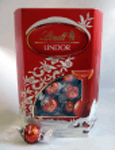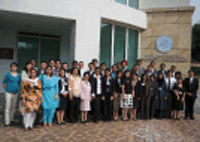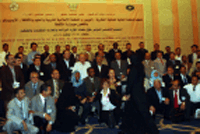
In the News
Rwanda and Canada First to use public health measure under WTO TRIPS Agreement
In September, Canada became the first country to use the waiver from the TRIPS Agreement provisions to issue a compulsory license authorizing a company to make a generic version of a patented drug for export. The Canadian government authorized Apotex to export 260,000 packs of Apo-Triavar – enough to treat 21,000 AIDS patients for a year – to be delivered to Rwanda.
TRIPS Agreement provisions allow governments to issue compulsory licenses to manufacture generic versions of patented drugs predominantly for domestic use. However, as many developing countries lack the manufacturing capacity to make their own generic drugs, WTO members decided in August 2003 to create a way to allow countries to issue compulsory licenses to allow the export of generic version of patented drugs to countries unable to produce them and in turn to allow their import by such countries.
Canada was the first exporting country that transposed the waiver into its national laws, through initial legislation in 2004 and the Canadian Access to Medicine Regime (CAMR) in 2005. However it took another two years to complete the required notifications as well as negotiating with the patent holder before issuing and to issue the first compulsory license.
Apotex announced that the drug would initially cost US$0.405 per tablet, compared to US$20 per tablet for the brand-name equivalent, and would drop in price further once production of the active pharmaceutical ingredients increased.
____________________
Introducing The Cat Magnet

(Courtesy of the USPTO)
And the winner is … the United States Patent and Trademark Office (USPTO) for The Cat Magnet. Some mistake surely? No. The Cat Magnet, a humorous public service film that encourages young people to be inventive and to protect their inventions, won the New York Advertising Week Dove Award at the Advertising Community Together (ACT) Responsible Exhibition in September.
The Cat Magnet is part of the Inspiring Invention publicity campaign launched by the USPTO in April 2007. All the ads feature ingenious inventions by young creators. The inventions are made with everyday objects, and offer solutions to those little challenges which kids face. The Bandage Puller, for example, distracts the inventor’s younger brother so that he does not notice the pain when a plaster is pulled off his leg.
The USPTO produced the television spot in collaboration with the National Inventors Hall of Fame Foundation and the Advertising Council. The Campaign was created by Publicis and the Hal Riney Advertising Agency. ACT promotes advertising that tackles social and environmental issues.
____________________
Lindt’s Chocolate Shape Marks

(Photo WIPO)
The Swiss Federal Court ruled in October that the round ball shape of the Lindt & Sprüngli AG’s LindorTM chocolates cannot be granted a three-dimensional (3D) mark. The court decided that marbles, balls and all other round spherical shapes belong to the public domain and thus cannot be granted protection as 3D marks.
Lindt showed the court that the public did identify the shape and packaging with the Lindor chocolate, but the court ruled that this did not remove the requirement that a mark be distinctive. Lindt was successful at proving distinctiveness in an earlier case in June. On that occasion, the court accepted to grant Lindt a 3D mark for their reindeer shaped chocolate.
Last year, Lindt won a suit in the German Federal Supreme Court against the chocolate manufacturer Hans Riegelein & Sohn GmbH & Co KG for marketing a chocolate similar to the Lindt Goldhase (Golden rabbit). The German Court’s ruling “that the shape and color must be considered when assessing the similarity of signs because elements of increased distinctiveness have relevant meaning for the overall impression” strengthened the position of 3D mark owners.
The registry of the Office for Harmonisation in the Internal Market shows that of the non-traditional marks – shape (3D), sound, color per se – 3D is the most used.
____________________

East Allington Primary School students Ellis Naylor, Emily Baker and Tom Morris with their winning invention, the Waker-Upper. (Photo: Gavin Fogg)
Cracking Ideas
Mr. Nick Park, the creator of Wallace & Gromit, selected the Waker-Upper 3000, designed by nine and ten-year-olds from the East Allington Primary School in Devon, U.K., as the winner of the 2007 Cracking Ideas project. The Waker-Upper uses a mallet, headphones, a water jet and eyelid openers to keep people awake during boring activities such as homework. Mr. Park said the Waker-Upper triumphed because it tackled a problem faced by all children.
The pupils from East Allington were presented with an original trophy created by Mr. Park’s studio, Aardman Animations, at the award ceremony on November 20 and each of the six regional finalists received a laptop computer.
Cracking Ideas uses lesson plans, a nationwide competition, teaching resources and a dedicated website to bring innovation into classroom lessons as a part of the national curriculum. Wallace and Gromit are the front characters for the project. Students are encouraged to walk in their footsteps by creating inventions from everyday objects. Cracking Ideas is a project of the UK Intellectual Property Office.
Source: UK Intellectual Property Office
____________________
The London Agreement
Reducing Translation Costs for Granted European Patents
Translation costs are often estimated to be between 20 to 40 percent of the total cost of filing a patent. The good news for inventors is that post-grant translation costs of European patents will significantly reduce when the London Agreement enters into force in the first half of 2008, following the ratification on September 26 by the French National Assembly.
Contracting States of the European Patent Organisation (EPO) which have a national language in common with one of the EPO official languages (English, French and German), such as Germany or Switzerland, will no longer be entitled to request a translation of European patents for validation in their country. EPO contracting States which do not have a national language in common with one of the EPO official languages will have to choose one official language of the EPO in which European patents have to be filed with their office, but will be entitled to request a translation of the claims into a national language.
____________________
SME Workshop on IP in the Franchising Sector
At an intensive workshop in Singapore in September, 26 participants from 15 countries in Asia and the Pacific region explored the effective exploitation of intellectual property (IP) rights in the franchising sector for business growth and commercial benefit. The workshop, the first of its kind to be held by WIPO, was organized in cooperation with the Intellectual Property Office of Singapore (IPOS), and was timed to coincide with Franchising Asia 2007, a major regional event also taking place in Singapore.

(Photo WIPO)
Franchising is still a relatively new business model for many countries in Asia and the Pacific region, and the wide variety of franchising laws and regulations in the region reflects the lack of common approach and consensus about the best legal framework to support it. The participants reported on the situation in their own countries and on the challenges and opportunities faced by national authorities in promoting the effective use of the IP system by small and medium-sized enterprises (SMEs) in the franchising sector. The meeting resulted in a five-point action plan aimed at improving the franchising environment. This included: developing a legal template or model law on franchising; conducting a feasibility study on the potential of franchising in the region; carrying out capacity-building programs to develop greater expertise and know-how on franchising; organizing national franchising exhibitions to increase awareness among SMEs; and setting up financial support institutions and infrastructures to facilitate business expansion in franchising.
Following the workshop, WIPO created a web-based discussion group, thus providing a forum for the participants, speakers and organizers to keep in contact and share further views and information. Participants in future events on the same subject will also be invited to join the group in order to expand the membership over time. The workshop also resulted in the production of a guide for SMEs on the effective use of IP in the franchising sector.
____________________
Traditional Knowledge and IP Take Center Stage in Yemen

Courtesy Ministry of Culture, Yemen
African, Asian, Arab and European representatives from 35 countries participated in the WIPO/ISESCO* Inter-Regional Forum on the Protection of Genetic Resources, Traditional Knowledge and Folklore, hosted in Sana’a by the Government of Yemen from November 4 to 6. The Forum addressed four main topics: policy development; legislation; capacity building; and the documentation of traditional knowledge (TK) and traditional cultural expressions. Egypt, India, Peru, Tunisia and Yemen, shared their national and regional experiences.
The Yemeni Prime Minister Ali Mujawar stated that inclusion of the national, Islamic and international dimensions in the forum contributed to a serious dialogue. “Culture is the most powerful and important thing that does not succumb to the laws of the market, but which spreads with the surging winds of globalization,” said the Prime Minister. He hoped the event would lead to a united Arab vision on the protection of traditional knowledge and folklore.
But the road is a long one. WIPO Deputy Director General Francis Gurry commented, “This is not an easy task. WIPO has been working on these issues for more than 10 years and we have not yet reached a quick and satisfactory result for the protection of cultural heritage.”
Participants in the event included representatives of the League of Arab States; the Patent Office of the Cooperation Council for the Arab States of the Gulf; the Islamic Center for Trade and Development; and the Research Center for Islamic History, Art and Culture. The Forum adopted an action plan and recommendations encouraging the member states of the Organization of the Islamic Conference to build coherent strategies and establish relevant national policies.
*Islamic Educational Scientific and Cultural Organization
____________________
The WIPO Magazine is intended to help broaden public understanding of intellectual property and of WIPO’s work, and is not an official document of WIPO. The designations employed and the presentation of material throughout this publication do not imply the expression of any opinion whatsoever on the part of WIPO concerning the legal status of any country, territory or area or of its authorities, or concerning the delimitation of its frontiers or boundaries. This publication is not intended to reflect the views of the Member States or the WIPO Secretariat. The mention of specific companies or products of manufacturers does not imply that they are endorsed or recommended by WIPO in preference to others of a similar nature that are not mentioned.